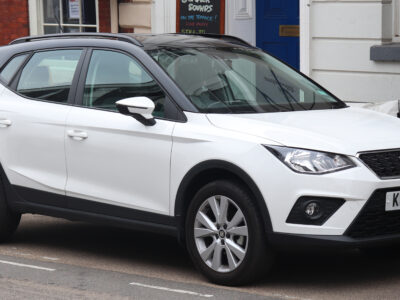
Comparing the Fiat 500e to the Traditional Fiat 500: Pros and Cons
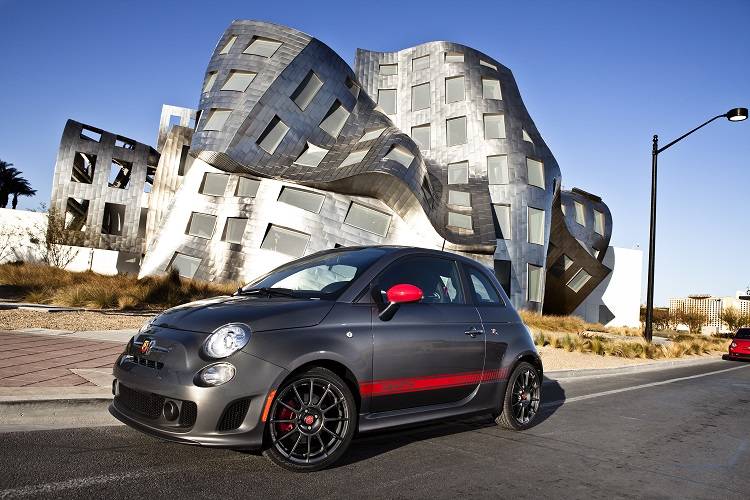
The Fiat 500 has long been a beloved city car, known for its charming design and compact size. With the introduction of the 500e, an electric version of the classic model, potential buyers are faced with a choice between traditional petrol-powered motoring and a more environmentally friendly alternative. This article compares the Fiat 500e to the traditional Fiat 500, weighing the pros and cons of each to help readers decide which model best suits their needs and preferences, examining key differences in performance, cost, and overall driving experience.
- Comparing the Fiat 500e to the Traditional Fiat 500: Pros and Cons
- What is the difference between Fiat 500 and 500e?
- Why is the Fiat 500e discontinued?
- What is the common problem with Fiat 500?
- Frequently Asked Questions
- What are the key differences between the Fiat 500e and the traditional Fiat 500?
- Is the Fiat 500e more expensive than the traditional Fiat 500?
- How does the range of the Fiat 500e compare to the fuel efficiency of the traditional Fiat 500?
- Can I still get the traditional Fiat 500 with the latest tech features?
Comparing the Fiat 500e to the Traditional Fiat 500: Pros and Cons
The Fiat 500 is an iconic car that has been a symbol of style and charm for decades. With the introduction of the Fiat 500e, an electric version of the classic model, car buyers are now faced with a choice between two distinct versions of the same beloved car. The traditional Fiat 500 is known for its fuel efficiency and agile handling, while the Fiat 500e offers a zero-emission driving experience and lower operating costs. In this comparison, we will explore the pros and cons of each model to help you decide which one is right for you.
Design and Features Comparison
The Fiat 500e and the traditional Fiat 500 share a similar design language, with the electric version featuring a few distinct tweaks to set it apart. The 500e has a unique blue accent on its badge and a few other design elements that give it a more modern look. In terms of features, both cars offer a range of options, including a touchscreen infotainment system and advanced safety features. However, the 500e has some exclusive features, such as a regenerative braking system and an eco-mode that helps to maximize its electric range.
Performance and Efficiency
When it comes to performance, the Fiat 500e has a single electric motor that produces 117 horsepower, while the traditional Fiat 500 has a range of petrol engines available, including a 1.0-liter turbocharged engine. The 500e has a top speed of 93 mph and can go from 0-60 mph in 9 seconds, while the traditional 500 has a top speed of up to 118 mph and can go from 0-60 mph in 10.5 seconds. In terms of efficiency, the 500e has an estimated range of up to 199 miles on a single charge, while the traditional 500 has a combined fuel economy of up to 65 mpg.
Cost and Incentives
The cost of the Fiat 500e and the traditional Fiat 500 varies depending on the trim level and features chosen. The 500e is generally priced slightly higher than the traditional 500, but it is eligible for government incentives that can help to offset the cost. In the UK, for example, the 500e is eligible for a plug-in car grant of up to £3,000. The traditional 500, on the other hand, has lower upfront costs and is exempt from certain charges, such as the London Congestion Charge.
| Feature | Fiat 500e | Traditional Fiat 500 |
|---|---|---|
| Engine/Motor | Single electric motor | 1.0-liter turbocharged petrol engine |
| Power | 117 horsepower | Up to 94 horsepower |
| Range/Fuel Economy | Up to 199 miles on a single charge | Up to 65 mpg combined |
| Top Speed | 93 mph | Up to 118 mph |
| 0-60 mph | 9 seconds | 10.5 seconds |
What is the difference between Fiat 500 and 500e?
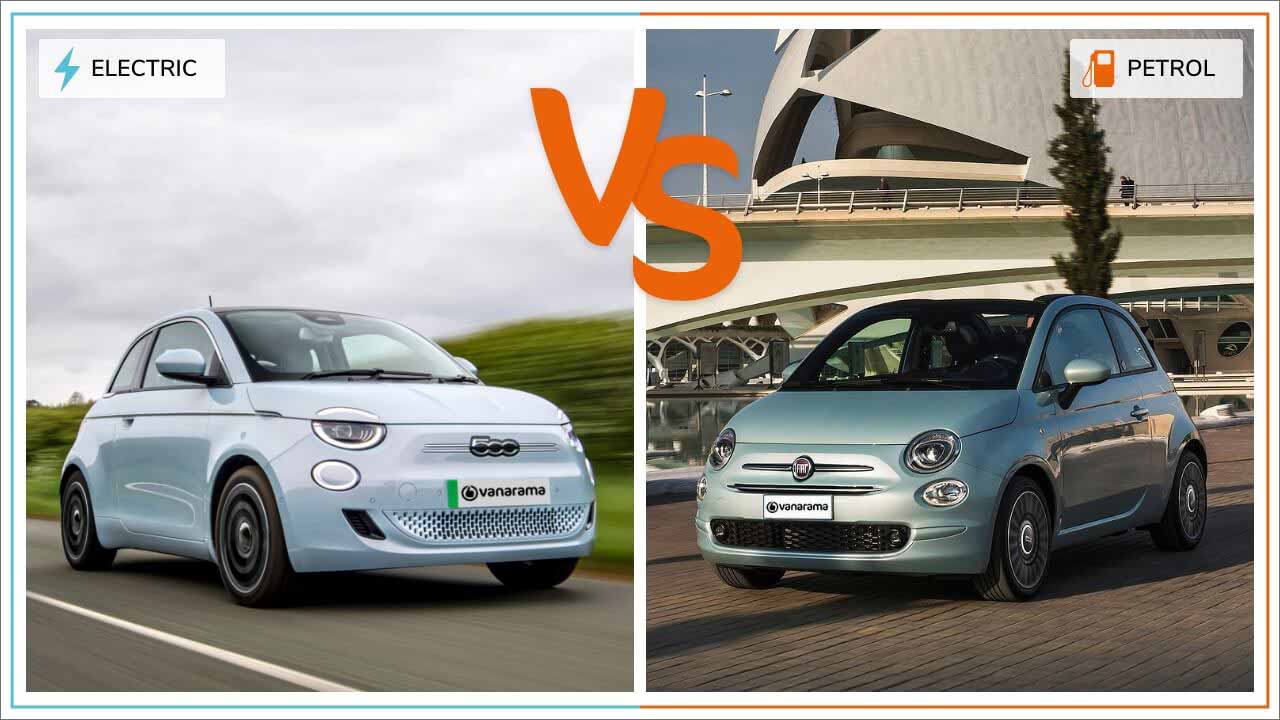
The main difference between the Fiat 500 and 500e lies in their powertrains. The Fiat 500 is available with a range of petrol and diesel engines, while the 500e is a fully electric version.
Design and Features
The Fiat 500 and 500e share a similar design, but there are some subtle differences. The 500e has a few distinct features such as a unique front bumper and some exclusive exterior colors. In terms of interior features, both cars offer a range of options including a touchscreen infotainment system and a variety of comfort and convenience features. Some of the key features available on both cars include:
You may be interested in reading Understanding the Fiat 500's Infotainment System and Common Issues
Understanding the Fiat 500's Infotainment System and Common Issues- 8.8-inch touchscreen infotainment system
- Bluetooth connectivity and smartphone integration
- Range of comfort and convenience features such as heated seats and cruise control
Powertrain and Performance
The most significant difference between the Fiat 500 and 500e is their powertrains. The Fiat 500 is available with a range of petrol and diesel engines, including a 1.0-liter turbocharged petrol engine and a 1.3-liter diesel engine. The 500e, on the other hand, is powered by a single electric motor that produces 118 horsepower. Some of the key differences in terms of powertrain and performance include:
- The 500e has a single-speed transmission, while the Fiat 500 has a range of manual and automatic transmissions
- The 500e has a range of up to 199 miles on a single charge, while the Fiat 500 has a range of up to 740 miles on a single tank of fuel
- The 500e has instant torque and a smooth, quiet ride, while the Fiat 500 has a more traditional engine sound and feel
Environmental Impact
The Fiat 500e is a more environmentally friendly option compared to the Fiat 500. The 500e produces zero tailpipe emissions, while the Fiat 500 emits CO2 and other pollutants. Some of the key environmental benefits of the 500e include:
- Zero tailpipe emissions
- Lower overall emissions when powered by renewable energy
- Reduced air pollution in urban areas
Why is the Fiat 500e discontinued?

The Fiat 500e was discontinued due to a combination of factors related to its sales performance and the strategic decisions made by its manufacturer, Fiat Chrysler Automobiles (FCA), now part of Stellantis. The electric version of the iconic 500 model was introduced with high expectations, aiming to capture a share of the growing electric vehicle (EV) market. However, it faced challenges that ultimately led to its discontinuation in certain markets.
Market Performance and Sales
The sales figures of the Fiat 500e were not as robust as anticipated, partly due to its pricing, range, and competition within the EV segment. The model was positioned as a premium offering, which, combined with its relatively limited range compared to other EVs, made it less competitive in a market increasingly dominated by more affordable options with better range and features.
- The 500e was priced at a premium, making it less accessible to budget-conscious buyers.
- Its range was limited compared to other electric vehicles available in the market.
- The brand's presence and marketing efforts were not as strong as those of competitors in key markets.
Regulatory and Strategic Decisions
Regulatory environments and strategic decisions played a significant role in the discontinuation of the Fiat 500e. The decision to discontinue the model in certain markets was influenced by FCA's (now Stellantis) overall strategy for the European market, where the 500e was more successful, and decisions regarding the allocation of resources to other models or segments.
- The company focused on models with higher demand and better profitability.
- Regulatory changes and incentives affected the model's viability in certain markets.
- The strategic decision to prioritize other Stellantis models over the 500e.
Future of Electric Vehicles at Fiat
Despite the discontinuation of the Fiat 500e, Fiat and its parent company, Stellantis, remain committed to electrifying their lineup. The company has announced plans to introduce new electric models, indicating a continued investment in EV technology and a commitment to offering a range of electric vehicles to consumers.
- Stellantis plans to expand its electric vehicle offerings across its brands.
- Fiat is expected to introduce new models that will be fully electric or offer electrified options.
- The company is investing in EV technology and manufacturing capabilities.
What is the common problem with Fiat 500?

 Understanding the Fiat 500's Infotainment System and Common Issues
Understanding the Fiat 500's Infotainment System and Common Issues How to Improve the Ride Comfort of Your Fiat 500
How to Improve the Ride Comfort of Your Fiat 500The Fiat 500 is a popular city car known for its stylish design and compact size. However, like any other vehicle, it has its share of common problems. One of the most significant issues with the Fiat 500 is its reliability, particularly with the electrical and mechanical systems.
Electrical System Issues
The electrical system in the Fiat 500 can be prone to faults, which can cause a range of problems. Some owners have reported issues with the car's infotainment system, navigation, and other electronic features.
Some common electrical system issues include:
- Faulty wiring and connections
- Malfunctioning sensors and actuators
- Software glitches and updates
Transmission and Gearbox Problems
The transmission and gearbox in the Fiat 500 can also be a source of problems. Some owners have reported issues with the car's dual-clutch transmission, which can cause hesitation, slipping, and other issues.
Some common transmission and gearbox problems include:
- Slipping or hesitation between gears
- Unusual noises and vibrations
- Faulty clutch packs and other internal components
Engine and Cooling System Issues
The engine and cooling system in the Fiat 500 can also be prone to problems. Some owners have reported issues with the car's engine oil leaks, coolant leaks, and other issues.
Some common engine and cooling system issues include:
- Oil leaks and consumption
- Coolant leaks and overheating
- Faulty thermostat and water pump
Frequently Asked Questions
What are the key differences between the Fiat 500e and the traditional Fiat 500?
The Fiat 500e is an electric version of the traditional Fiat 500, with a battery-powered engine and eco-friendly features. The traditional Fiat 500, on the other hand, is available with petrol or hybrid engines. The 500e has a distinct design and additional tech features, while the traditional 500 offers more engine options and a wider range of trim levels.
Is the Fiat 500e more expensive than the traditional Fiat 500?
Generally, the Fiat 500e is priced higher than the traditional Fiat 500, mainly due to the cost of its electric powertrain and battery technology. However, government incentives for electric vehicles can help offset the higher upfront cost. The total cost of ownership for the 500e may also be lower, considering savings on fuel and potentially lower maintenance costs.
How does the range of the Fiat 500e compare to the fuel efficiency of the traditional Fiat 500?
The Fiat 500e has an estimated range of around 180 miles on a single charge, depending on driving conditions. The traditional Fiat 500's fuel efficiency varies by engine type, with some models achieving over 60 mpg. While the 500e's range is limited by its battery, it offers zero tailpipe emissions and lower operating costs per mile.
Can I still get the traditional Fiat 500 with the latest tech features?
Yes, the traditional Fiat 500 is available with a range of modern tech features, including touchscreen infotainment systems, smartphone integration, and advanced safety features. While it may not have all the unique features of the 500e, such as regenerative braking, it still offers a well-equipped interior and comfortable driving experience, making it a viable alternative for those not requiring an electric vehicle.
You may be interested in reading Understanding the Fiat 500's Infotainment System and Common Issues
Understanding the Fiat 500's Infotainment System and Common Issues How to Improve the Ride Comfort of Your Fiat 500
How to Improve the Ride Comfort of Your Fiat 500 Tips for Driving a Fiat 500 in Urban Environments
Tips for Driving a Fiat 500 in Urban Environments
If you want to know other articles similar to Comparing the Fiat 500e to the Traditional Fiat 500: Pros and Cons you can visit the category Driving.
Deja una respuesta

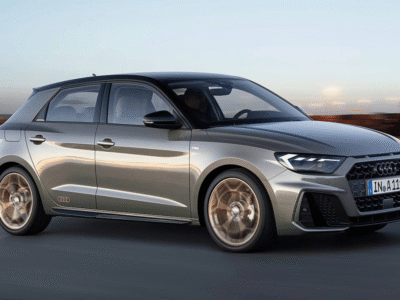
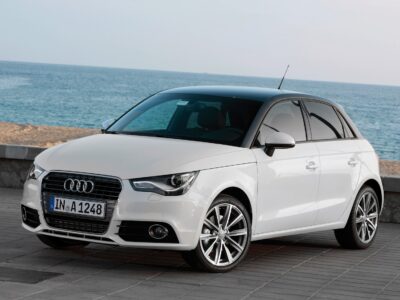
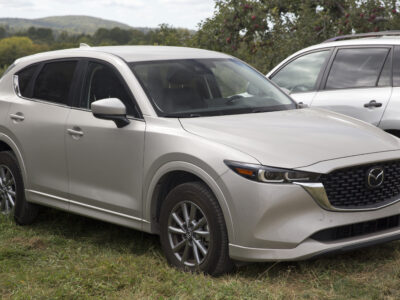
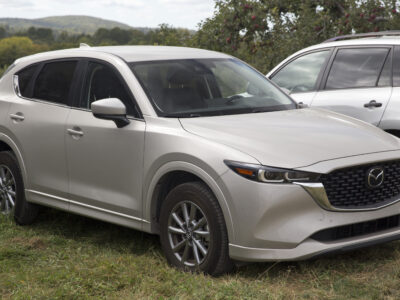
More content of your interest